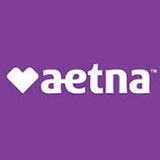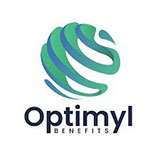Group Health Insurance for Your Business
At Health Insurance Specialist, we are dedicated to helping your business manage group health insurance. Our team is available year-round to assist with any HR-related tasks that come with administering group health benefits. We focus on building strong, long-term relationships with our clients and providing ongoing support—whether it’s resolving claims issues, adding a new employee to your plan, or answering any questions. With just one call or email, we aim to reduce the stress of managing the administrative side of your company’s benefits.
Types of Group Health Insurance Plans
 There are two main types of group health insurance options available:
There are two main types of group health insurance options available:
1. Fully Insured Health Insurance
A fully insured plan means the cost of coverage is based on the age and location of each employee. As a result, employees may have different premiums, and the rates are not impacted by claims filed by the group. This can be a good option for some businesses but may not be the best fit for all, depending on the size of your team.
2. Partially Self-Funded Health Insurance
In a partially self-funded plan, premiums are determined by the overall health of the group rather than individual factors like age or location. If your group is healthier, you may qualify for better rates. These plans include a claims account that covers initial medical expenses. If the claims account runs out, a stop-loss carrier takes over to protect the company from additional costs beyond what was budgeted.
At the end of the year, if there’s money remaining in the claims account, your company may be eligible for a refund, depending on the specific plan chosen. This option can be beneficial for both large and small groups in today’s health insurance environment.
Key Considerations for Group Health Insurance
Participation Requirements
Most group health insurance plans require a minimum level of participation from employees. Generally, at least 75% of eligible employees must sign up for coverage in order for the plan to be valid. This ensures that the group is large enough to spread out the risk of health costs, which helps keep premiums manageable.
If you are a small business, there may be some flexibility, but it’s important to understand your plan’s participation rules. In some cases, you might also need to meet participation requirements for both employees and dependents to ensure the plan’s cost-effectiveness.
Employer Contributions
Another important factor to consider is how much the employer will contribute to the premium costs. While the employer is not legally required to pay for employee coverage, many companies choose to cover a portion of the premiums to attract and retain talent. The level of contribution can vary depending on your business’s budget and the type of plan you select.
Waiting Periods
Some health insurance plans may have a waiting period before employees are eligible for coverage. This is typically between 30 to 90 days from the start of employment, although it can vary based on your plan and state regulations. It's important to clearly communicate this to new hires so they understand when they can expect to be covered.
Open Enrollment Periods
Group health plans typically have an annual open enrollment period, during which employees can make changes to their coverage. This is the time to add or remove dependents, switch plans, or make other adjustments. Outside of open enrollment, changes to coverage (like adding a new employee or changing a plan) may only be allowed due to qualifying life events, such as marriage or the birth of a child.
Our Insurance Carriers
We proudly represent a range of trusted insurance carriers to provide you with the best possible group health options:

United Health Care

Aetna

Allstate Benefits

Optimyl Benefits

Unified Health Plans
By working with these well-known carriers, we can offer flexible plans and ensure your company has access to reliable health insurance coverage tailored to your specific needs.
